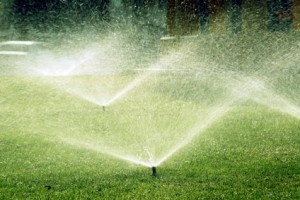 Thank you for visiting the Hessenauer Sprinkler Repair and Irrigation blog and website. We like to inform our online readers about news, tips and advice concerning sprinkler irrigation here in Central Florida and the Orlando area. Today we would like to discuss a few things to help further understand more about magnetic latching solenoids.
Thank you for visiting the Hessenauer Sprinkler Repair and Irrigation blog and website. We like to inform our online readers about news, tips and advice concerning sprinkler irrigation here in Central Florida and the Orlando area. Today we would like to discuss a few things to help further understand more about magnetic latching solenoids.
A solenoid valve is an electromechanically operated valve. The valve is controlled by an electric current through a solenoid. In the case of a two-port valve the flow is switched on or off, and in the case of a three-port valve, the outflow is switched between the two outlet ports. Multiple solenoid valves can be placed together on a manifold.
A magnetic latching solenoid is equipped with a permanent magnet to hold the plunger in the retracted position without power. Latching solenoids utilize the electrical current pulse or internal permanent magnet material to maintain a set position without the constant application of an electrical current.
Solenoid valves are the most frequently used control elements in fluidics. Their tasks are to shut off, release, dose, distribute or mix fluids. They are found in many application areas. Solenoids offer fast and safe switching, high reliability, long service life, good medium compatibility of the materials used, low control power and compact design.
Through the use of a permanent magnet, the latching valves are bi-stable in either shifted state, allowing the valve to stay in either state indefinitely without drawing power. The de-energized pull force refers to the pulling force applied to the plunger by the permanent magnet when the solenoid is de-energized. To shift the valve from one state to another, a short 50 millisecond DC voltage is applied to the coil. To shift the valve back, a reverse polarity pulse is applied to the coil. This feature makes this valve suitable for use in remote areas where continuous power may be limited.
While the principal of operation is similar to all linear solenoids, latching solenoids are different in that the electrical polarity is important to obtain proper operation. As the current flows in one direction energizing the coil field in the solenoid, it adds to the pull of the permanent magnet. The armature is attracted to the stationary pole within the solenoid body. Once the armature has moved full travel and is in contact with the pole, it will remain in this position without any further electrical power input. The armature is held in this position by the permanent magnet. To release the solenoid from this hold position, the “holding” magnet’s attraction has to be cancelled by sending a current back through the coil field in the opposite direction.
Latching solenoids are most efficient when the pulse time is very short compared to the hold time. While a latching solenoid can be used in both short and long stroke applications, the solenoid stroke should be minimized to improve efficiency.
Thank you again for visiting the Hessenauer Sprinkler Repair and Irrigation blog and website. Bookmark us for more news, tips and advice concerning sprinkler irrigation, and if you have a project that needs attention here in the Central Florida and Orlando area, contact us at 407-302-2227 today!
